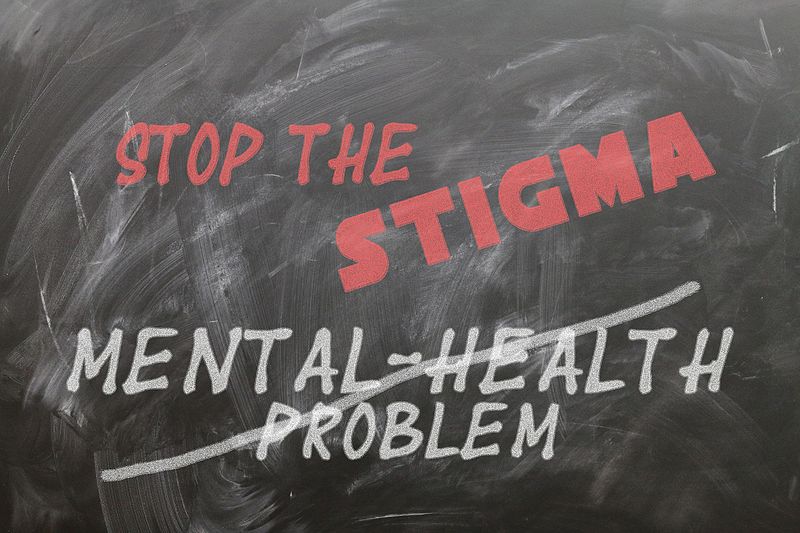Burnout to Balanced: Here’s How Your Office Can Ensure You Are All Happy of Mind
Work-related stressors play a big part in causing or exacerbating mental health illnesses, and most workplaces are not equipped to deal with these issues.

An estimated 56 million Indians suffer from depression, while 38 million from anxiety disorders. Despite this, mental health in India is heavily stigmatised and not frequently discussed.
Work-related stressors play a big part in causing or exacerbating mental health illnesses, and most workplaces are not equipped to deal with these issues. While there are reports of corporate India beginning to address some of these, we thought it might be useful to understand how the development sector is dealing with this issue.
Many professionals in the non-profit world work directly with trauma, violence, abuse, and injustice. This, in addition to any stressors in their personal lives, can critically affect their mental health.
Even within the social sector, it’s not just people working at the frontlines whose mental health needs to be considered, but the emotional and psychological well-being of everyone within an organisation. This means that junior and entry-level staff as well as top management must be cared for.
To understand what can be done, we spoke to a few organisations to learn of their practices promoting mental health at the organisational level, through formal and informal routes. Here’s what we learnt:
1. Keep an eye out for your employees

Suparna Gupta, Aangan, suggests, “Monitor how team members are feeling, and allow them to switch roles, pursue passion projects, and even take them out of the field, if needed.”
Vicarious trauma, also called compassion fatigue, is a term that describes the ‘cost of caring’ for others. Individuals can sometimes get too close to the projects they are working on, and might not realise how it is affecting them.
Senior management should especially check in with employees in the field and remote workers about how they are feeling, and see if they need specific support on anything. This shifts the onus on the manager instead of expecting team members to open up on their own.
If you notice that something is not right, or if the individual articulates this, give them the space to move roles, experiment with different programmes or projects, or even take leave if they need to.
2. Emphasise self care

Nikita Patodia, Point of View, opines, “Self care could mean different things to different people.”
Whether it’s taking a day off, meeting with a therapist, or taking a yoga class, encouraging employees to think of themselves, and prioritise their mental health goes a long way.
Downtime and rest are imperative to avoid burnout, a phenomenon that is as much emotional and psychological, as it is physical.
3. Create a healthy support ecosystem

Dr Smita Dharmamer, Aangan, shares, “The team has identified a couple of senior organisation members who they feel comfortable talking to, and they seek them out to discuss difficult situations and issues.”
Informal support groups, ‘buddy systems’, regularly scheduled sessions with counsellors, and similar practices can encourage team members to talk about any challenges they may face in their work or personal lives.
If members from within the team are sought out, their time should be allocated accordingly, keeping in mind that they also provide this additional support to their team members.
Confidentiality is key, particularly if the exercise does not include an external counsellor or therapist, and is being conducted internally, along with making it clear to staff that talking about their mental health will not affect their job standing.
4. Create a nurturing work environment

Sylvia Priyanthi, Quest Alliance, shares, “We have created a safe space where individuals (we look at our team members as being individuals before employees) can learn and grow. We encourage people to try different things, and even fail.”
At Quest, failure is viewed as a learning opportunity. The organisation has internal programmes for employees to define and develop their own career paths, combine personal interests and goals with those of the organisation.
Even if your organisation doesn’t have any specific interventions to deal with mental health, making sure the work environment is not toxic and is a safe and supportive space, can significantly benefit the mental and emotional well-being of the people working there.
5. If possible, reach out to professionals

Dr Nayreen Daruwalla, SNEHA, notes, “More than 50 per cent of the staff members who have sought counselling, have done so for family reasons or other personal issues, not just work-related stress.”
Stress arising from personal problems is bound to spill over to other aspects of a person’s life. Even if it is not work-related, addressing any type of stress can help employees, and the organisation at large.
SNEHA has made counsellors available to staff for well over a year. Ensuring that employees have access to professionals—counsellors, psychologists, or psychiatrists—allows for the opportunity to discuss non-work-related issues and find constructive solutions.
Workshops are another channel to train field staff deal with stress, and bringing professionals to lead these workshops is useful.
6. Integrate mental health into employee welfare funds

Abhilasha Rawat and Nehal Parekh, Arpan, reveal, “We have a therapeutic allowance applicable monthly for all employees across the board.”
A contingency fund like this encourages employees to pursue external avenues for mental wellness.
Also Read: Of Mental Health & Stigma: 6 Myths Surrounding Psychiatric Medication Debunked
If one in four people is going to be affected by mental health disorders at some point in their lives, we urgently need to build acceptance and address the stigma surrounding them. This can happen only by changing the paradigm.
We must call for change by asking investors to invest differently; government officials to push for new policies; professionals and community members to redesign systems of care, and redefine indicators of care.
(Written by Ayesha Marfatia and edited by Shruti Singhal)
This article was originally published on India Development Review (IDR). You can view it here.
Like this story? Or have something to share?
Write to us: [email protected]
Connect with us on Facebook and Twitter.
If you found our stories insightful, informative, or even just enjoyable, we invite you to consider making a voluntary payment to support the work we do at The Better India. Your contribution helps us continue producing quality content that educates, inspires, and drives positive change.
Choose one of the payment options below for your contribution-
By paying for the stories you value, you directly contribute to sustaining our efforts focused on making a difference in the world. Together, let's ensure that impactful stories continue to be told and shared, enriching lives and communities alike.
Thank you for your support. Here are some frequently asked questions you might find helpful to know why you are contributing?


This story made me
-
97
-
121
-
89
-
167














